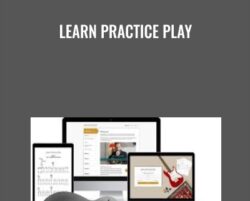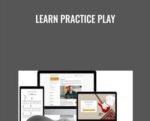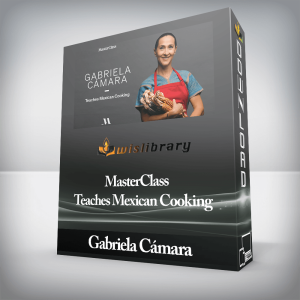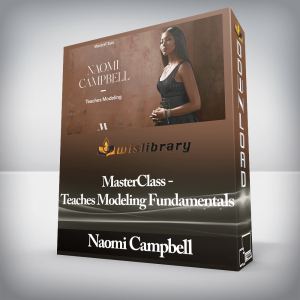Important question for novice guitarists feeling stifled and frustrated at their lack of progress…What’s the main difference between a guitarist who can jam out, improvise, and express themselves with creative confidence and freedom…And the “eternal newbie” who never gets better even after months or years of playing?You might think it’s…•how many hours you practice each week•the size and shape of your hands•how much you spend on your guitar and gear•or how many ‘learn guitar’ books you’ve read.However, it’s actually none of these. Because here’s the deal.The key difference between a skilled, confident guitaristand the eternal newbie comes down to…Knowing how to practice.And the truth is…Most beginners are practicing guitar the wrong way(… and no, it’s not your fault)Let me know if this sounds familiar:You started this whole learn guitar thing with all the motivation in the world.You knew who you wanted to play like, what songs you were going to learn, and maybe even had plans for recording your own music.You bought your first guitar and dove in… learning basic notes, a few simple chords, and trying to figure out how to push down on the strings so they don’t buzz.Very quickly, you realized just how hard it is to move your hands across the fretboard and make the guitar sound the way you want it to.But hey, you didn’t care. Just the thrill of feeling like a guitar player was enough to keep you going.Coasting on a wave of excitement, you’d practice every day, blocking out an hour or two to watch YouTube videos and maybe even try to play along with your favorite songs.You figured at that rate, it’d only be a few months before things would start to click and you’d really “get” the guitar, and be able to translate the music in your mind to actual sounds…To the point where it felt like a natural extension of your mind, and the music you create would become a perfect expression of how you felt inside.But things haven’t quite worked out that way.Months into your journey, your repertoire has barely expanded.Your hands still refuse to make a decent G chord, much less an F (or any other barre chord for that matter.)And your knowledge of music theory – you know, the stuff that allows you to grow as a guitarist and create your own licks and progressions – might as well be nonexistent.Little by little, your commitment to practice guitar with total devotion has become a “maaaaybe a couple times a week, if I can find the time” type commitment.And when you do carve out the odd hour to sit down and play, your sessions feel like an exercise in frustration and guilt…Because every time you put fingers to strings, it only serves to remind you that you’re no further along than you were 3 months ago.Where in the holy name of Les Paul did things go wrong?Allow me to be blunt here… but it likely started the very moment you picked up the guitar.Because chances are, you began without a solid roadmap for what to practice and when to practice it.And as a beginner, practicing the wrong way can be worse than not practicing at all.So if you’re stuck in a rut, feeling stifled and frustrated with your lack of progress, then let me tell you, it’s actually not your fault… and it could have a lot to do with the training materials you’ve been using up until now.Because a lot of the books and courses out there use tedious, outdated teaching methods that make learning feel like a chore…Some go on and on about basic things like the different parts of the guitar, when what you really need to do to learn is to dive in and start practicing the right way.At the other end of the spectrum, you’ve got guitar teachers on YouTube telling you the best way to learn is to “just start” and try to play along with them… without explaining even basic principles of why the song is structured the way it is.Having the right training materials makes learning guitar so much simplerNo wonder so many beginners get frustrated within a couple months of picking up the instrument.But the goods news is: since you’re reading this page I can assume…You’ve STILL Got the Burning Desire to Get Better at GuitarAnd with the amount of time, effort and energy you’ve invested already, you deserve to be as great as you’ve always wanted to be.Guitar can be a source of pleasure, an always-available outlet for expression that fills you with deep joy and satisfaction… and I want you to experience that too.You can make steady, consistent improvement every time you sit down to practice, to the point where you can hear and feel the changes, and experience that blissful flow state where everything just works.And you can have the skills, confidence, and musical know-how to share your talents with others – whether that means starting a SoundCloud channel, playing live for friends and family, or even starting a band.In a moment, I’m going to show you how you can experience all these things.But before we dive in, you first need to get familiar with what I call…The 3 Progress-Killing Guitar MythsYou MUST Ditch Right NowI saw these same issues over and over with my students… and if you believe them, they’re going to keep you from achieving anything close to the success you deserve.Myth #1: If you have small hands, you’ll never be able to get really goodOf all the excuses new guitarists come up with, this may be the biggest bummer of all.Because if you believe it, you’ll think you’re just not ‘cut out’ to play guitar, no matter how much you want to.Here’s the deal…No question that many of the “guitar gods” like Eric Clapton, Jimmy Page, and Buckethead have huge hands… and without a doubt, their long, spidery fingers only helped them become technically proficient.But those guys are the exception to the rule… the vast majority of guitarists do not have freakishly long fingers.And it may surprise you to hear, but there are many great guitarists with smaller-than average hands.Like Paul Simon, Angus Young of AC/DC, Andy Summers from the Police… and of course the legendary axeman Randy Rhoads!So the size of your hands should in no way hold you back from being great at guitar.You see, what limits you from fretting over wide distances as a beginner isn’t finger length. It’s actually the strength and dexterity of your fingers.No matter the size and shape of your hands, you CAN become great at playing guitar.And over time, each individual finger will get stronger and gain increased range of motion, allowing you to fret over much wider distances.Even if you’re brand new and your hands still feel inflexible, there are many different ways to play chords and notes on the guitar…So if you can’t play a chord one way, you can easily find a different voicing that sounds good and is easier to play.Myth #2: To get good at guitar, you need to practice at least an hour (or more) per dayPractice is absolutely essential to master the guitar. There’s no way around it: if you want to get good, you have to put in the time.But how much time is actually required?Listen, if you’re practicing for an hour, 2 hours, 3 hours every single day – and you’re practicing the right things in the right order – you’re going to progress by leaps and bounds. Think guys like Eddie Van Halen, who was totally obsessed… and did pretty much nothing else all day when learning to play.But outside of a small minority of professionals and college students majoring in music, that kind of schedule isn’t realistic.Life gets in the way. Work, school, and maintaining a healthy social life all compete for your time.And after more than a decade teaching private guitar lessons, I’ve come to realize consistency of practice trumps total hours of practice, every single time.Across the board, the students who practiced a little bit every day made faster, more consistent progress than students who “loaded up” and practiced several hours at a time, once or twice a week.The trend was so clear, I was able to break it down to the minute-by-minute level into what I like to call the “Minimum Viable Practice Session.”And in a moment, I’m going to show you how to put this idea to work for you, so practicing each day becomes automatic.Myth #3: The Best Way to Learn Guitar is to “Just Play Songs”You can find many, many incredible guitar players on YouTube. Some of them even make me jealous!But being great at playing guitar doesn’t necessarily make someone a skilled teacher of guitar.To make progress as a guitarist, you must have a clear ‘roadmap’ for practice.For example, many online teachers will tell you the best way to learn is to “just play songs.” They tell you all you need to learn is to watch them play a song, follow along, then try again and again until it finally clicks.If you were born a prodigy this approach might work… but for most people it’s not a very good recipe for improvement.When you’re just mimicking other people, you’ll never understand the structure behind the music… not to mention, bouncing from song to song means you’ll waste countless hours going sideways, without a clear path forward.What you need is a step-by-step system that builds upon itself and challenges you just enough at each point along the way… not another entertaining video that might include some great tips and tricks but doesn’t have any clear direction and larger plan behind it.The Good News Is,There IS a Proven RoadmapFor Learning Guitar the Right WayAt this point, you already know that practice is the key to becoming a great guitarist.And by using the training system I’m about to share, you’ll also:Have the power to make rapid, consistent, predictable progress in as little as 15 minutes per dayUnderstand the theory behind the songs you’re playing, so you’re free to unleash your inner virtuoso and rock your own riffs and progressionsActually look forward to practicing because you’ll be having so much fun, your results will feel practically effortlessYou can experience all these things, whether you’re a total beginner or coming back to guitar after a few years…… but they DO depend on using a specific, step-by-step ‘practice roadmap’ to get you there.One that uses only proven, modern teaching methods and never feels boring, outdated, or overly-theoretical.One that’s been my secret weapon for helping my in-person students make massive leaps in both technical skill and musical knowledge within just a matter of weeks.And…One you’ll excitedly point back to a couple months from now when you’re absolutely nailing songs, riffs, and progressions you thought were WAY beyond your ability.Who Am I To Tell You This?Hi there, my name is Paul Davids and playing guitar is my passion.I first picked up the guitar when I was 12 years old. I was a kid with a red Squier and dreams of playing like Green Day, Metallica, and a local band called ‘de Heideroosjes’.These days, I really enjoy teaching guitar and helping other people experience the same creative joy that’s brought me so much pleasure over the years.It’s why I started my personal channel on YouTube, which has grown into a pretty popular guitar channel with close to a million subscribers from all over the world!On the channel I share all things that interest me, based on what I’ve learned from over two decades of playing, songwriting and producing.I also got my music degree with a minor in teaching the guitar from Rotterdam Conservatory.For 11 years, I taught private lessons to hundreds of students of all different skill levels in private, 1-on-1 sessions.And what I learned over that decade-plus of teaching guitar is that in order to make consistent progress, you MUST have a well-crafted roadmap for both learning and practicing.And over the past 4 months, I’ve put together a program that is exactly that.I’m incredibly excited to introduce you to…A “natural learning” guitar system that gives you a clear, progressive, step-by-step roadmap for exactly what you need to practice and when…Guaranteeing you’ll practice guitar more consistently, with more focus, and most importantly, with far more enjoyment than you have ever experienced before.Learn, Practice, Play is based on the 4-Step Practice Framework I developed in over 11 years of teaching in-person guitar lessons…A system that makes learning guitar faster, easier, and incredibly FUN.The 4-Step Framework In ActionWith Learn, Practice, Play, we’ll practice…The right lesson at the right timeWith a clear outcome in mindThen apply it immediately, in a musical contextAnd do it consistently until it sticksWith the 4-Step system working in your favor, you’ll make rapid, consistent, effortless-seeming progress every time you sit down to play.In just a matter of weeks, you’ll develop a solid foundation in the core fundamentals of guitar, including:•Fretting, Strumming, and Fingerpicking•Melody and Key•Chords and Scales•Timing•Improvisation, Riffs, Licks, Soloing, and moreHere’s Just a TasteOF WHAT YOU’LL LEARN INSIDE LEARN, PRACTICE, PLAYWith Learn, Practice, Play you’ll be playing the guitar from the very start… not just learning about it, but using it, playing it, and getting comfortable with it.In Module 1 You’ll Learn:•Hand position, strumming, frets, and fingering•A beautiful melody you can play two different ways•How to combine chords into great-sounding progressions•The E minor pentatonic scale and the chromatic scale•And an easy-to-learn lick that’s soulful and bluesyAnd in Module 2, You’ll Learn:•The 12-bar blues progression (the foundation for countless jazz, blues, and rock n’ roll songs)•The concept of key•Playing major scales on a single string•How to play with a shuffle or swing feel•And a simple, beautiful folk melodyIn Module 3 You’ll Play:•A light, lovely melody, played with both fretted & open strings•Power chords, and learn how to change between them rapidly and fluidly•Hammer-ons and pull-offs•The E minor blues scale and a rocking blues lick•And a taste of basic music theoryIn Module 4 We’ll Dive Into:•A beautiful new melody, played fingerstyle•Chord embellishment•Triads and functions•A progression using suspended chords•Some great country and bluegrass licksIn Module 5 You’ll Learn:•Phrasing, soloing and improvisation•Playing the minor scale•Different ways to play a blues progression in the key of E•A lovely folk melody, played fingerstyle•And concepts like ghost strumming, pickup notes, and the turnaroundIn Module 6 You’ll Learn:•How to combine melodies and chords•A new strumming technique, using palm mute and accented notes•How chords are derived from the scale of a major key (and how to know which chords will sound good together)•A riff played with a “gallop” rhythm•And how to play slash chordsAnd in Module 7 You’ll Learn:•How to improvise (and have it sound amazing), just by knowing the first or last chord of a song•How to do double stops, bends, and muted notes•Barre chords and 2 great-sounding progressions that use them•Four advanced licks•And more complex strumming patterns, e.g. only hitting one or two strings when strummingWhat’s more, when you join Learn, Practice, Play today, you’ll also get access to…4 Progress-Boosting BonusesBonus #1: Private Learn, Practice, Play Facebook Group ($99 Value)In Learn, Practice, Play, nobody plays alone! When you join, you’ll get to hang out with hundreds of your fellow guitarists inside the private Facebook community and exchange feedback, encouragement, and tips and tactics to improve your musical skills.#Connect with your fellow guitar enthusiasts, share your progress, and post videos of your latest musical creations.#Get instant feedback on your technique from others in the community, so you can improve even faster.#Make friends with people just like you… serious students of guitar, dead-set on becoming as great as they can be.Bonus #2: The Practice Fundamentals Pack ($199 Value)Need to brush up on the basics? With the Practice Fundamentals Pack, you get detailed videos covering key concepts every guitarist MUST know before they can master the instrument.Inside the Practice Fundamentals Pack, we’ll go in-depth on:•How to properly tune your guitar•Warming up•How to read tabs•How to read chord diagrams•Playing with a pick versus playing with fingers•How to practice with a metronome•And moreBonus #3: Guitar Care Basics ($99 Value)To make sure your guitar looks and sounds its best, it’s important to care for your instrument properly.In this training, I teach you my top tips for guitar maintenance that every guitarist should know. When you use the techniques I share, your guitar will reward you with many years of faithful service.Bonus #4: 15 Handpicked Riffs To Continue Your Journey ($49 Value)Once you’ve completed the 7 core Learn, Practice, Play modules, your journey isn’t over… in fact, it’s only just begun! And this special bonus is your first big step after you’ve mastered the main lessons.To help you continue your journey, I’ve included 15 great guitar riffs to challenge your skills and help you progress even further. This also includes a video of me demonstrating how to play each riff correctly, so you can follow along at home. Additionally, I’ve included tabs for each one, so you know exactly which notes and chords to play.An Unmatched Opportunity for Any Serious Student of GuitarIf you wanted to learn everything inside Learn, Practice, Play as a private, 1-on-1 student, the price tag would easily surpass $1,000…And I’ve seen music school courses that charge $1,500 or more for online programs with similar material.But I want to make Learn, Practice, Play accessible to everyone.And because you’re serious about learning guitar the right way, I’m excited to offer you complete, lifetime access to Learn, Practice, Play and all bonuses, including:✔The 7 core modules with 42 in-depth video lessons✔Membership in the official Learn, Practice, Play Facebook Group✔The Practice Fundamentals Video Pack✔The Guide to Guitar Care✔The Guitar Riffs Collection✔Plus extras like lesson PDFs with tabs and standard notation, chord charts, music glossary, and a printable practice scheduleThat’s more than 5 ½ hours of in-depth video-based instruction to accelerate your improvement as a guitarist, all for just…Get Learn Practice Play – Paul Davids, Only Price $49Tag: Learn Practice Play – Paul Davids Review. Learn Practice Play – Paul Davids download. Learn Practice Play – Paul Davids discount.
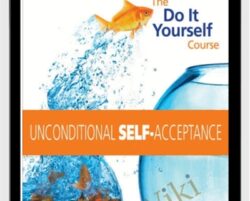 Unconditional Self-acceptance – Cheri Huber
₹3,486.00
Unconditional Self-acceptance – Cheri Huber
₹3,486.00
 Yin Yoga: foundation of a quiet practice – Pranamaya & Paul Grilley
₹2,158.00
Yin Yoga: foundation of a quiet practice – Pranamaya & Paul Grilley
₹2,158.00
Learn Practice Play – Paul Davids
₹7,470.00

